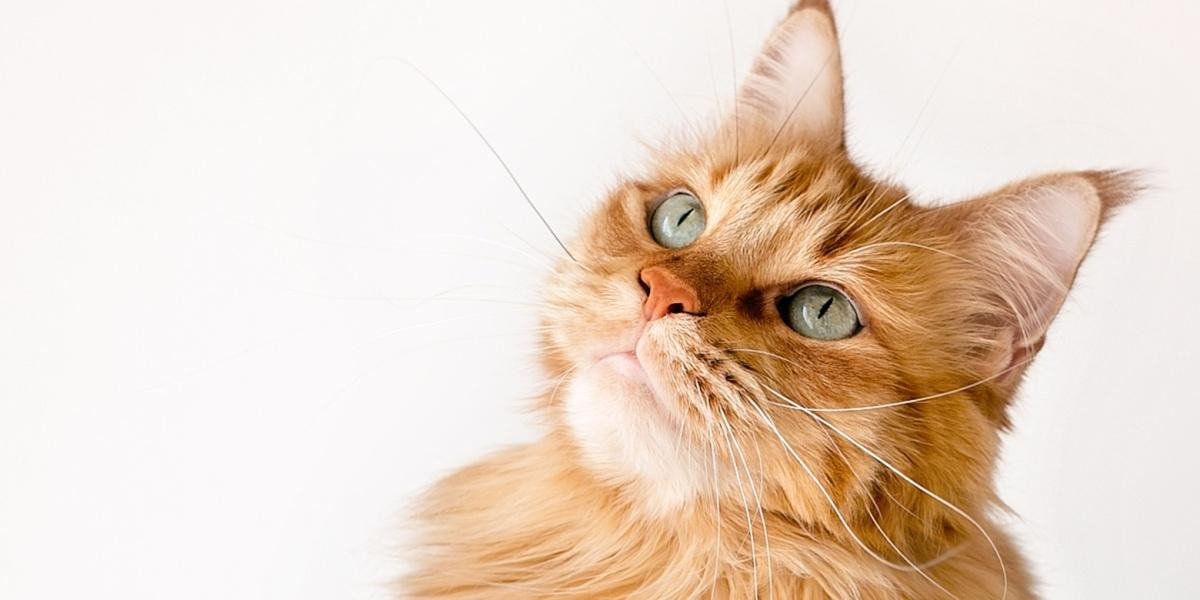 A long-haired orange cat looks up with gentle eyes
A long-haired orange cat looks up with gentle eyes
Garfield, Morris, and Milo – these famous feline figures immediately bring to mind a vivid image: the orange tabby cat. But have you ever noticed how often orange tabby cats also sport beautiful white markings? The Orange And White Cat, a delightful variation of the classic tabby, isn’t a specific breed but a captivating color pattern that showcases the iconic tabby charm with an added splash of pristine white.
While “tabby” describes a coat pattern characterized by stripes, swirls, or spots, rather than a breed, it’s a pattern found across a vast array of cat breeds, both domestic and wild. Among the tabby colors, orange stands out, and when paired with white, it creates a particularly striking and endearing feline. These bi-colored beauties capture hearts with their warm hues and playful patterns.
Because the orange and white cat is defined by its coloration and pattern, not breed, generalizations about temperament require a nuanced approach. However, the combination of the energetic orange tabby personality with the gentle touch often associated with white markings can result in a truly special companion. Let’s delve deeper into what makes orange and white cats so uniquely appealing and explore the fascinating facts behind their captivating coats.
What Makes Orange and White Cats Irresistible?
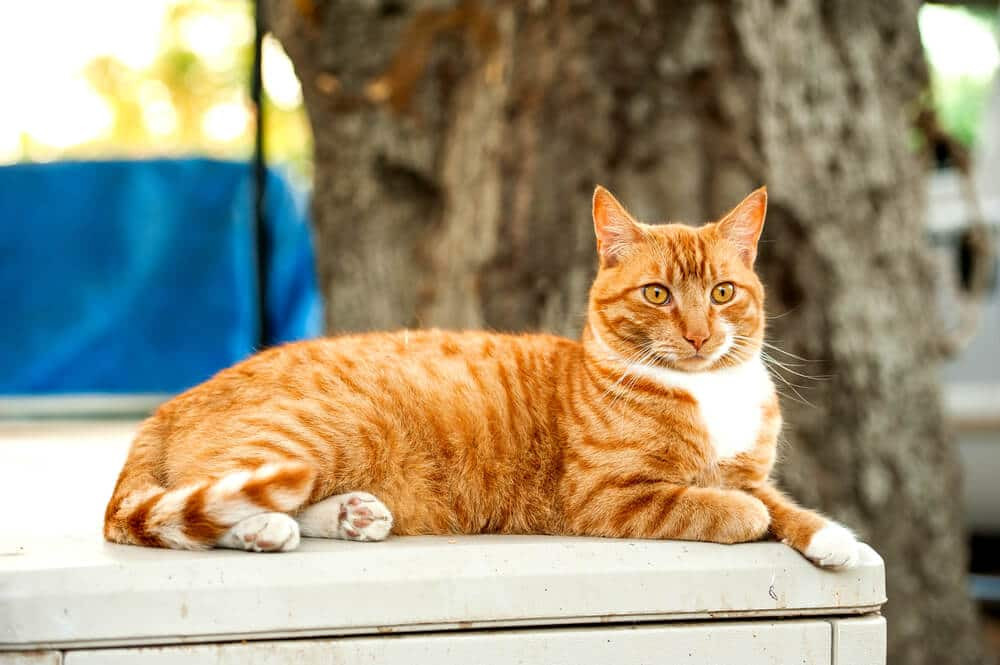 orange tabby
orange tabby
The allure of orange and white cats lies in their vibrant coats and the eye-catching contrast between the warm orange hues and crisp white markings. The term “tabby” itself refers to the distinctive patterns – stripes, spots, swirls, or a combination – that adorn their fur. When this tabby pattern is expressed in rich orange tones and set against areas of pure white, the result is a visually stunning feline.
The distribution of the tabby pattern and white markings varies greatly. Some orange and white cats may feature bold tabby stripes across their orange patches, while others might have more subtle tabby markings interspersed with larger areas of white. The white itself can appear as socks, bibs, belly patches, or even mask-like facial markings, creating endless variations in their appearance.
The tabby pattern in orange and white cats manifests in five primary variations, each adding a unique dimension to their bi-color coats:
- Mackerel
- Classic
- Spotted
- Ticked
- Patched (often seen in bi-color cats)
While tabby patterns are diverse, the most recognizable characteristic is striping. In orange and white cats, these stripes can range from prominent, tiger-like bands on the orange sections to more delicate striping confined to the legs or tail, especially where orange coloration is present. The white areas typically remain solid, providing a clean backdrop for the tabby patterns.
Beyond the pattern, orange and white tabby cats often share common tabby traits, particularly in their orange areas. These include:
- A distinctive “M” marking on the forehead within the orange tabby patches.
- White or darker outlines encircling the eyes within the tabby areas.
- Pigmented paw pads and lips within the orange fur.
- Delicate “pencil” lines on the face within the tabby sections.
- A lighter shade on the chin and belly, often appearing white or cream in bi-color cats.
- Banding on the legs and tail within the orange tabby markings.
Understanding these physical characteristics helps appreciate the nuanced beauty of orange and white cats. Let’s explore how these tabby patterns specifically play out in the context of their bi-color coats.
1. Mackerel Orange and White Cat
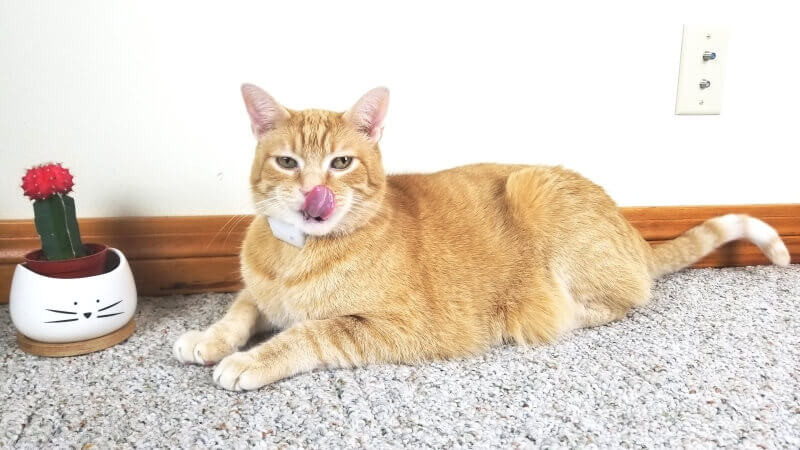 ProTrackTor.Wessie
ProTrackTor.Wessie
When envisioning an orange and white cat, the mackerel tabby pattern is frequently what comes to mind, especially in the orange portions of their coat. This iconic “tiger cat” look features narrow, parallel stripes running vertically down the body within the orange sections. Ideally, these stripes are evenly spaced and unbroken, creating a striking contrast against any white fur.
Though reminiscent of tiger stripes, the mackerel pattern originates from a central stripe along the spine, from which other stripes branch out, resembling a fish skeleton – hence the name “mackerel.” In orange and white cats, this pattern is usually confined to the orange areas, with white sections providing solid breaks in the striping.
2. Classic Orange and White Cat
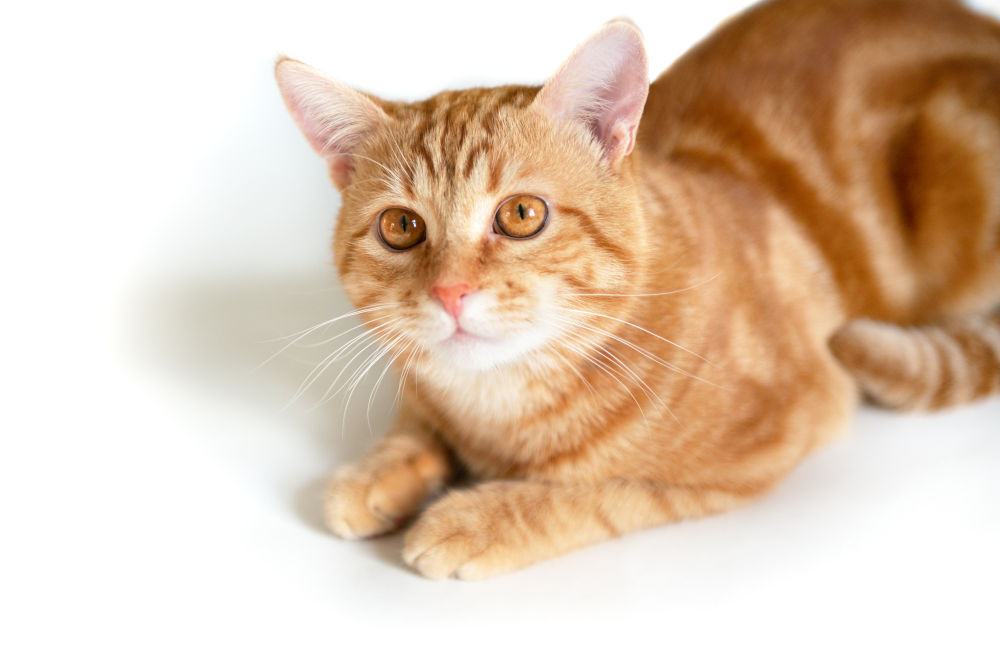 Classic orange tabby
Classic orange tabby
While the mackerel tabby might be the quintessential tiger-striped cat, the classic tabby pattern is arguably the most prevalent, and equally beautiful in orange and white cats. These cats display bold, swirling patterns on their backs within the orange parts of their coat, resembling the marbled effect seen in baked goods. The patterns are characterized by random swirls of darker and lighter orange, often culminating in a distinctive bullseye or oyster pattern on the sides, all beautifully contrasted with white areas.
The classic tabby pattern in an orange and white cat offers a softer, more rounded visual compared to the linear mackerel stripes, adding another layer of visual interest to their bi-color appearance.
3. Spotted Orange and White Cat
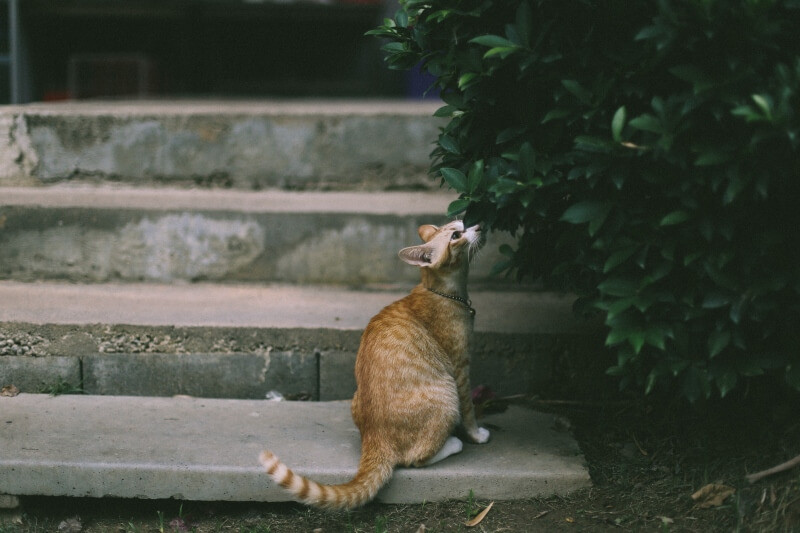 Spotted Tabby Cat
Spotted Tabby Cat
Tabby cats are primarily recognized for their stripes, but spots are another fascinating variation, particularly in orange and white cats. Spotted tabbies feature distinct spots of varying sizes scattered across their sides within the orange parts of their coat. These spots can sometimes be challenging to differentiate from a broken mackerel tabby pattern, and indeed, experts debate whether spotted tabbies evolved from mackerel tabbies or have distinct genetic origins.
In orange and white cats, the spotted pattern provides a playful, almost leopard-like look to the orange sections, further enhanced by the clean, solid white areas that frame the spotted patterns.
4. Ticked Orange and White Cat
Ticked tabby is perhaps the most unique tabby variation and can be harder to immediately recognize as a tabby, especially in bi-color cats. Ticked orange and white cats exhibit the typical tabby “M” marking on their forehead within any orange patches, and they possess agouti fur – hair with alternating bands of light and dark color. However, distinct stripes or spots are very subtle or virtually absent in the body fur, becoming visible only under close inspection or in bright light.
The ticked pattern in orange and white cats results in a subtly textured orange coat, often appearing more uniformly orange at first glance, with the white markings providing the most striking visual contrast. Breeds like Somali and Abyssinian are known for the ticked tabby pattern, and while less common in bi-color combinations, it adds a refined elegance to orange and white cats.
5. Bi-Color Orange Tabby Cat: The Definition of Orange and White
 Orange and white kitten playing
Orange and white kitten playing
While all the above tabby patterns can occur in orange and white cats, the term “bi-color” itself is often used to specifically describe cats with distinct patches of white alongside their tabby coloration. A classic example of a bi-color orange tabby is, in essence, the orange and white cat. These cats have clearly defined areas of orange tabby patterns juxtaposed with patches of pure white fur.
The distribution of orange and white is highly variable, making each bi-color orange and white cat uniquely patterned. Some may have a predominantly orange tabby coat with white paws or chest, while others might be mostly white with orange tabby patches on their head, back, or tail. This striking contrast and variability are key to the visual appeal of orange and white cats.
The Genetics Behind the Orange and White Coat
Understanding the genetics of feline coat color reveals why orange and white cats are so captivating and why certain characteristics, like the prevalence of males, are observed. Coat color and patterns are largely determined by genes located on the X chromosome. Female cats possess two X chromosomes (XX), while males have one X and one Y chromosome (XY).
Cats inherit genes from both parents, with the vast spectrum of cat colors stemming primarily from two base colors: black and orange (or red). For each gene, a kitten receives two copies, one from each parent, and these genes can be either dominant or recessive.
The gene for orange color is dominant (O). This means a kitten needs only one copy of the orange gene to express orange coloration to some degree in its coat.
This genetic mechanism significantly influences the sex ratio in orange and white cats, and orange tabbies in general. For a female cat to be orange, she must inherit the orange gene (O) on both of her X chromosomes (becoming XO XO). A male cat, however, only needs to inherit the orange gene on his single X chromosome (becoming XO Y). Because of this, approximately 80% of orange tabby cats are male. This also applies to orange and white cats – males are statistically much more common.
The tabby pattern itself is determined by the agouti gene. “Agouti” refers to hair shafts that have alternating bands of light and dark pigment, resulting in a speckled or “salt and pepper” appearance.
A dominant agouti gene (A) results in a visible tabby pattern, while a recessive agouti gene (a) typically leads to a solid-colored coat. However, even solid-colored cats with two copies of the recessive gene (aa) can sometimes display faint tabby markings, often termed “ghost striping,” especially visible in certain lighting conditions. In orange and white cats, the tabby pattern is expressed in the orange sections due to the presence of the dominant agouti gene in those areas.
The white patches in bi-color cats are caused by a separate “white spotting” gene, which masks the underlying coat colors, including tabby patterns, in those areas. The interplay of these genes – orange, tabby, and white spotting – creates the diverse and beautiful coats seen in orange and white cats.
Personality and Temperament of Orange and White Cats
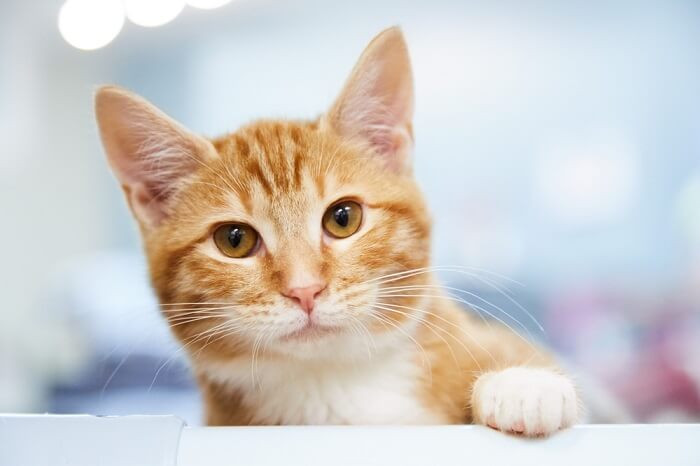 orange-tabby-cat
orange-tabby-cat
As orange and white is a color pattern rather than a breed, it’s important to remember that personality is more closely linked to breed and individual upbringing. However, certain anecdotal observations and general cat behavior principles can offer insights into the typical temperaments associated with orange and white cats.
Determining the breed of your orange and white cat, especially if adopted from a shelter or as a stray, can be challenging. DNA tests like the Basepaws cat DNA test can provide valuable information about your cat’s genetic background. Basepaws analyzes a saliva sample to compare your cat’s DNA against a vast database, offering insights into breed ancestry and genetic predispositions.
Many breeds can exhibit the orange tabby and bi-color patterns. Here are a few breeds where you might commonly find orange and white cats:
The American Curl, recognized for its uniquely curled-back ears, is known for its affectionate and playful nature. American Curls often form strong bonds with their families and can be found in various colors, including orange and white tabby.
The Egyptian Mau, a relatively rare breed, is known for its speed and distinctive spotted coat, though they can also be found in tabby patterns. Egyptian Maus are intelligent, loyal, and enjoy interacting with their human companions. While less common in orange and white, the combination is striking when it occurs.
The Javanese, sometimes called the colorpoint longhair, is a variant of the Oriental breed. Javanese cats are known for their vocal nature and their love of attention. They are playful and affectionate, often seeking constant interaction with their owners. Orange and white Javanese cats can be particularly striking with their silky coats and engaging personalities.
Also Read: 8 Gorgeous Orange Cat Breeds That Make Great Pets (With Pictures)
The Ragdoll, a large and gentle breed, is famous for its relaxed and docile temperament. Ragdolls are known for being tolerant of children and other pets, making them excellent family companions. While typically colorpointed, Ragdolls can also exhibit bi-color patterns, and an orange and white Ragdoll combines stunning looks with a sweet disposition.
While generalizations about personality based solely on coat color should be approached cautiously, orange tabby cats, including orange and white variations, are often described as being particularly friendly, outgoing, and affectionate. Some believe this could be related to the genes influencing orange coat color also having links to social behavior. However, individual personality is always a complex mix of genetics, breed, upbringing, and experiences.
12 Fun Facts About Orange and White Cats You Might Not Know
Here are some fascinating facts that highlight the unique charm of orange and white cats:
- Orange and white cats, like their solid orange tabby counterparts, are often called ginger or marmalade cats. These affectionate nicknames capture their warm, inviting coloration.
- The majority of orange and white cats are male, a consequence of feline genetics. The X-chromosome linked orange gene means males are far more likely to inherit the orange coat.
- The orange gene is dominant over most other coat colors except white. This dominance explains why white is a common second color in bi-color orange tabby cats.
- Orange and white cats often develop charming dark freckles on their noses and mouths as they mature. These freckles are a common trait in orange tabbies and typically appear by the age of two.
- An orange and white cat’s personality is more influenced by its breed than its coat color. You can find orange and white cats across many breeds, each with its own typical temperament traits.
- All orange cats are technically tabbies, including those with white markings, although not all tabbies are orange. Even in solid orange areas of an orange and white cat, you can often see faint “ghost striping” in bright light.
- The distinctive “M” marking on the forehead is a hallmark of all tabby cats, including orange and white ones. This marking is a genetic inheritance from their wildcat ancestors.
- While temperament varies, some studies, like those cited by National Geographic, suggest a possible link between coat color and personality, with orange cats potentially being more vocal. This might extend to orange and white cats as well.
- Garfield, the world-famous cartoon cat, is an orange tabby, and his classic portrayal often includes white markings on his tummy. He’s one of the most recognizable feline figures globally.
- Winston Churchill’s beloved cat, Jock, was an orange tabby, and later, Jock VI, continuing the tradition, is an orange tabby with white markings. Churchill’s fondness for orange cats is well-documented.
- Morris, the iconic mascot for 9Lives cat food, is an orange tabby, often depicted with some white on his chest. Morris is a long-standing symbol in advertising and pop culture.
- Stubbs, the honorary mayor of Talkeetna, Alaska, was a ginger cat, and while details of white markings aren’t always highlighted, many ginger cats, including possible mayor Stubbs, often have white patches. Stubbs’ story is a testament to the endearing nature of ginger and orange cats.
Relevant Articles:
Frequently Asked Questions
Are orange and white cats rare?
Orange and white cats, while not as common as some other color combinations, are not considered truly rare. Orange tabby cats, in general, are less common than brown tabbies, and the addition of white spotting further refines the specific combination. However, due to the genetics of orange coloration and white spotting being relatively widespread in domestic cats, orange and white cats are frequently seen and enjoyed. Female orange and white cats are less common than males due to the genetic factors discussed earlier.
Do orange and white cats have specific health issues?
There are no specific health issues directly linked to the orange and white coat color itself. A cat’s coat color does not inherently predispose it to any particular diseases. Health concerns in orange and white cats, like in any cat, are more likely to be related to their breed, genetics unrelated to coat color, diet, and lifestyle. It’s always best to consult with a veterinarian regarding any health concerns for your individual cat.
What is the average lifespan of an orange and white cat?
The average lifespan of an orange and white cat is similar to that of other domestic cats, typically ranging from 12 to 15 years, and often longer for indoor cats. Factors influencing lifespan include genetics, breed, diet, lifestyle (indoor vs. outdoor), and veterinary care. Providing a balanced diet, regular check-ups, and a safe, enriching environment are key to maximizing the lifespan and well-being of your orange and white companion.
